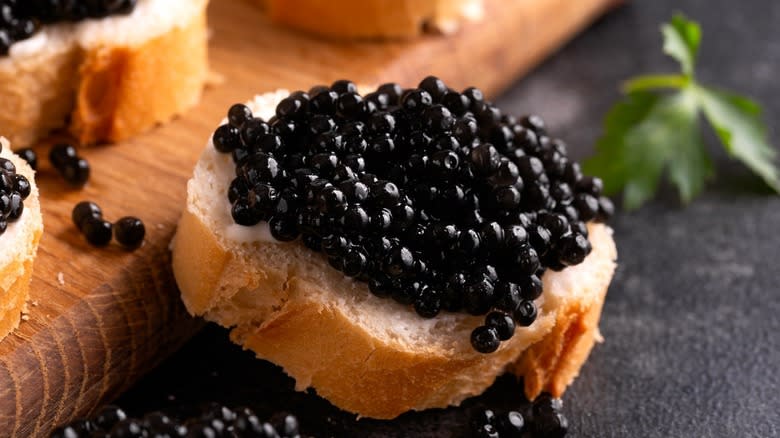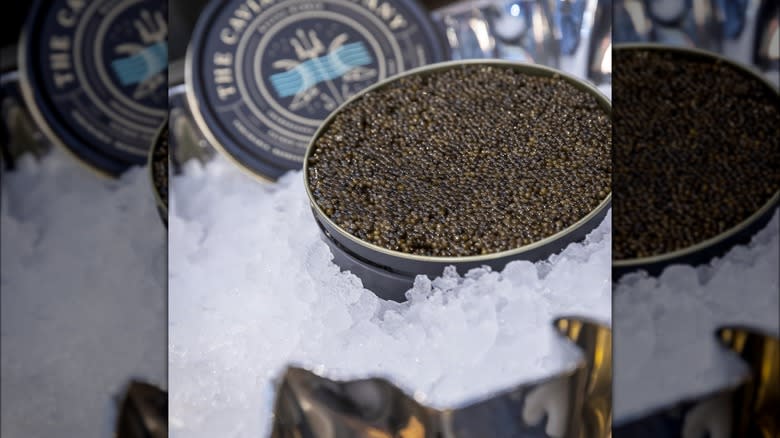How To Tell If Your Caviar Is Fake

Caviar has fancy-pants status because it's rare to find and difficult to harvest. This cured fish egg, which comes from a species called sturgeon, sells for $50-$75 per ounce. Bursting with salty, nutty, and sweet flavor, caviar instantly elevates any meal's vibe — this elegant topping can transform boring potatoes or add flair to deviled eggs, which is why you'll find it on the menus of five-star restaurants around the world. Because of its high price point, the caviar world is rife with knockoffs. Fortunately, it's easy to distinguish the real thing from the pretenders.
Often, stores that sell eggs (or "roe") from other types of fish will label those options as caviar, though they will usually clarify the species on the tin. If you don't want to pay for the real thing, caviar substitutes, like salmon roe (which is easier to find), will have a similar effect. If you do get your hands on real caviar, be sure to eat it quickly because the flavors begin to change as soon as the tin is opened.
Read more: 7 Nuts You Should Be Eating And 7 You Shouldn't
Evaluate Your Caviar's Appearance And Texture Before Eating

The untold truth about caviar is that it was once considered food for the lower classes, as female sturgeons, which were considered bottom feeders, can lay up to 700,000 eggs(though not all of these survive). To reduce food waste, fishermen ate these roe plain or with porridge. When the elite began eating caviar, everyone else followed suit. Today, sturgeon roe is so rare, some brands pretend their products are caviar, even if they aren't. Luckily, it's easy to tell the difference before you dig in.
The first key to buying true caviar is verifying its source, which should always be sturgeon. Otherwise, If you detect an overly fishy smell, your caviar is suspect. The real thing should smell fresh and salty, like the ocean. Look out for texture, as well — you shouldn't see any kind of buildup or residue on the eggs. A surplus of liquid is another tell-tale sign your caviar is fake, particularly if its hue doesn't match the eggs. Counterfeit caviar doesn't taste the same as true sturgeon roe; it's often bland with an unsatisfying texture. Real caviar has a deeper, more complex flavor.
Read the original article on Mashed.


